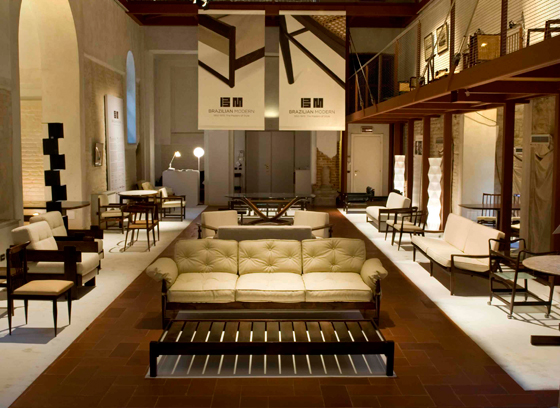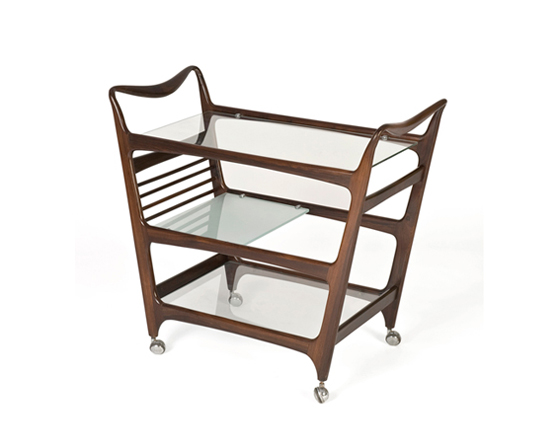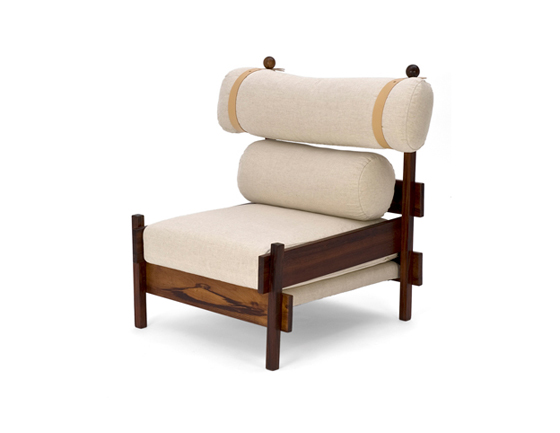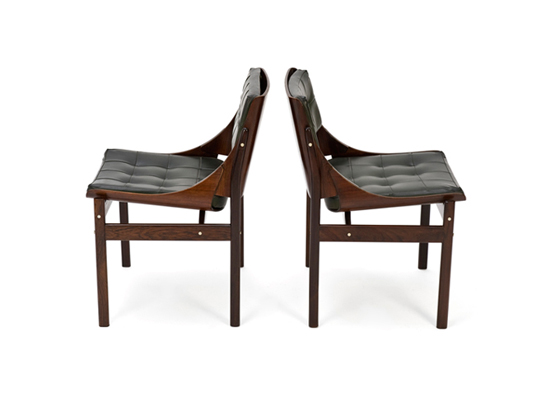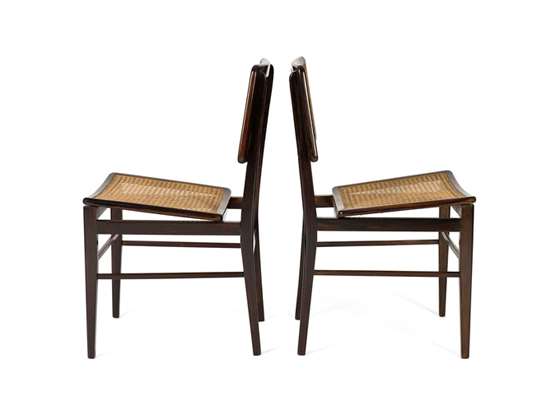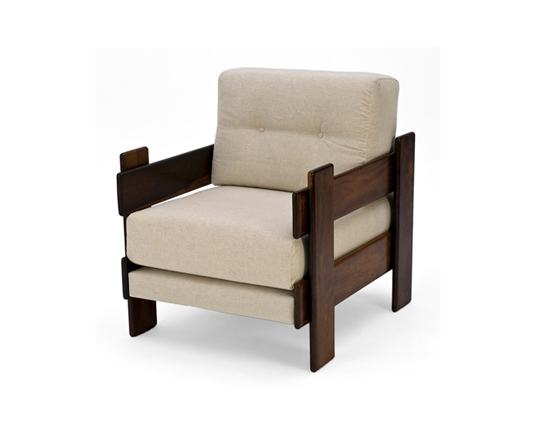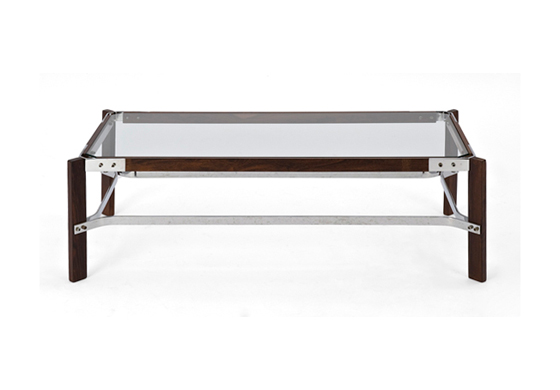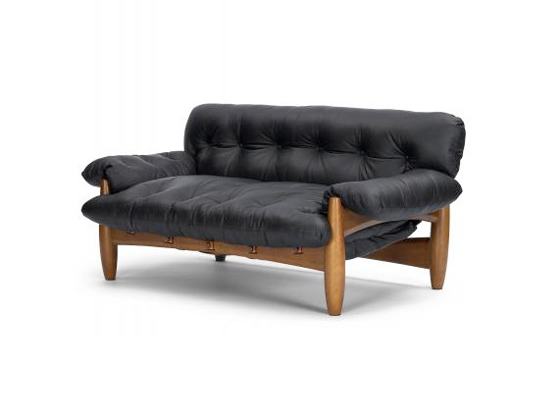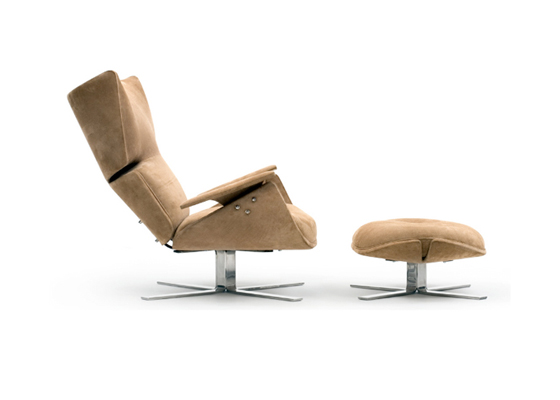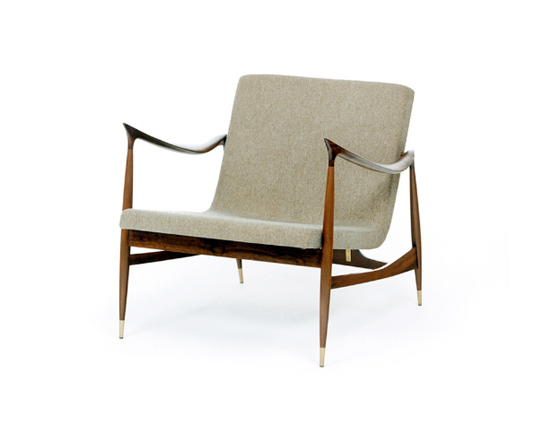Tropical Modernism: The masters of Brazilian Modernism
Text by Susanne Fritz
Switzerland
12.05.10
As part of this year's 'Fuori Salone' in Milan, the 'relics' of the Brazilian Modernism were displayed in a church near the city's Porta Romana: rare pieces by the so-called 'Tropical Modernists' of the 1950s, 60s and 70s.
When Le Corbusier first visited Rio de Janeiro in 1929, he found Brazil fascinating, but rural and provincial. Although he gave a few lectures, these were reserved for a small, highly educated circle that was able to follow his talks in French. Lucio Costa and Oscar Niemeyer were among these few; they would later come to define Brazilian Modernism.
It was also they who made a stunning entrance with the Brazilian Pavilion for the 1939 New York World's Fair. This was followed in 1943 by the 'Brazil Builds' exhibition at MOMA, which in turn was followed by the touring exhibition in Europe of the same name, which brought developments in Brazil to the attention of architects from the northern hemisphere.
'Brazilian Modern' exhibition at Spazio Miticoro, Milan
The construction of planned city Brasilia in the 1950s was the high point of Brazilian Modernism: the new town, or rather new capital, can still be considered as the largest building project of all time. But many other well-known and lesser-known modernists worked alongside the internationally renowned architects Costa and Niemeyer, whose work we examine here.
Jacaranda and glass trolley, ca 1950, designer unknown; photo © Brazilian Modern
Sergio Rodrigues,Tonico chair; photo © Brazilian Modern
In 1963, Sergio Rodrigues, a young and more or less unemployed architect, received the commission to design the seating for the auditorium of Brasilia's new university. Darcy Ribeiro, the university's director, told Rodrigues in the same breath that he had just 20 days for the design, production and installation of the seating. Over in Sao Paolo, Rodrigues considered the following questions. Firstly, what materials are readily available? Secondly, who can work with them? A workshop took on the metalwork and the carpentry, while a saddler's were charged with making the leather seats and backs.
The project illustrates how the availability of local materials and technical know-how influenced Tropical Modernism enormously. The furniture's details are refined, but often have simple joints.
Jacaranda and leather chair, designer unknown; photo © Brazilian Modern
A trail-blazer of Tropical Modernism and a significant role model for Sergio Rodrigues was Joaquim Tenreiro. Like Lucio Costa and Burle Max, he was also born in Europe, emigrating to Brazil in 1928 at the age of 22. As son of a traditional cabinet-maker, he found employment in the workshops of the Brazilian bourgeoisie, like, for example, that of renowned company Laub & Hirsch, which produced furniture predominantly in the European style.
Tenreiro built up a lot of experience in doing this, but was much more interested in the development of his own, contemporary formal language, which, to his mind, needed to display a 'lightness of form', 'a lightness, which has nothing to do with literal weight, but rather is about elegance and spatial functionality'.
Jacaranda and wool fabric chairs, designer: John Graz; photo © Brazilian Modern
The vast experience he gained in working with wood stood him in good stead, and tropical wood like Jacaranda was also the material that the indigenous Brazilian people had used for making different utensils, like cooking ware, weapons, furnishings and lots more.
Tenreiro's new style brought together opposing influences, like the luxurious colonial style and the simple, mostly utilitarian formal language of native Indian products.
Following the opening of his own furniture atelier in 1940, Tenreiro had to wait another ten years until his work became famous – not least through his biggest client Oscar Niemeyer, whose buildings he furnished.
Jacaranda and leather chair, design: Joaquim Tenreiro; photo © Braziilian Modern
Jacaranda and cane chairs, design: Joaquim Tenreiro; photo © Brazilian Modern
The 'Brazilian Modern' exhibition doesn't only display work by well-known international masters like Rodrigues and Tenreiro; it also features work by Giuseppe Scapinelli, who ran a furniture shop in Sao Paolo in the 1950s, from which he sold his own designs.
'Spider' Jacaranda and glass dining table, ca 1950, design: Giuseppe Scapinelli; photo © Brazilian Modern

'Spider' Jacaranda and glass dining table, ca 1950, design: Giuseppe Scapinelli; photo © Brazilian Modern
×Jacaranda and fabric armchair, ca 1960, designer unknown; photo © Brazilian Modern
'Novo Rumo' was a collective of architects who often worked in glass, wood and metal. The 'Novo Rumo' group was closely linked with the Polish artist Jorge Zalszupin. Zalszupin emigrated to Brazil after the Second World War, like so many other Europeans. He founded the design collective L'Atelier, which consisted of architects, engineers and craftsmen.
Jacaranda, metal and glass side table, ca 1950, design: Novo Rumo; photo © Brazilian Modern
The construction of Brasilia was the high point, and at the same time the end, of many Brazilian modernists' careers. Following the military coup of 1964, a number of the key figures of Brazilian Modernism went into exile or were imprisoned, among them Oscar Niemeyer and Paolo Mendes da Rocha.
Detail of jacaranda, metal and glass side table, ca 1950, design: Novo Rumo; photo © Brazilian Modern

Detail of jacaranda, metal and glass side table, ca 1950, design: Novo Rumo; photo © Brazilian Modern
×In spite of all the constraints under the military dictatorship, Brazil experienced an unforeseen economic miracle, during which a new generation of designers emerged. Even today, Brazil produces an astounding variety of modern architecture and furniture, which are only in part known in Europe. EDRA and Vitra have given the Campana Brothers and Brazilian design in general an international profile. However, due to its strong domestic market, many Brazilian products don't make it over the ocean and are only available in Brazil.
Re-edition of the Mole sofa, design: Sergio Rodrigues; photo © ClassiCon
A number of companies are represented in the exhibition, however, and many of products by the masters of Brazilian Modernism are still in production today. Sergio Rodrigues, like most of the designers in Brazil in the 1950s and 60s, founded his own manufacturing company; since then, Linbrasil has acquired the rights to reproduce his furniture designs, which are sold in Europe by ClassiCon.
Re-edition of Diz armchair, design: Sergio Rodrigues; photo © ClassiCon
Jorge Zalszupin's furniture is available through Etel Interiores. Alongside new, own-label designs by Etel Carmona's design team, which are in the tradition of the Brazilian Modernists' superior handwork, Etel Interiores have also reissued work by Gregori Warchavchik and the design collective Branco & Preto.
Re-edition of Paulista armchair, design: Jorge Zalszupin; photo © Etel
Re-edition of Dinamarquesa armchair, design: Jorge Zalszupin; photo © Etel
Timeless classics, whose formal language has a touch of the exotic and whose workmanship is part of a tradition of outstanding handcraft: Brazilian design lends the less tropical, more northerly interior an exciting, stylish warmth.
Once the 'Brazilian Modern – Masters of Style' closes, the 120 or so pieces on display will be sold. Where and when is not yet known.
